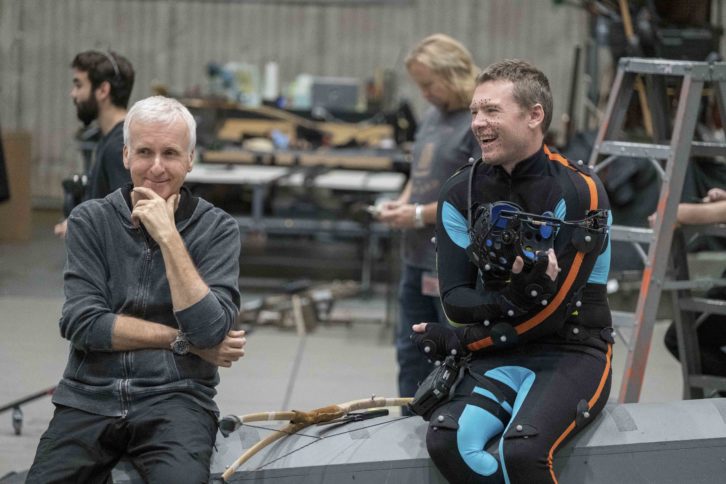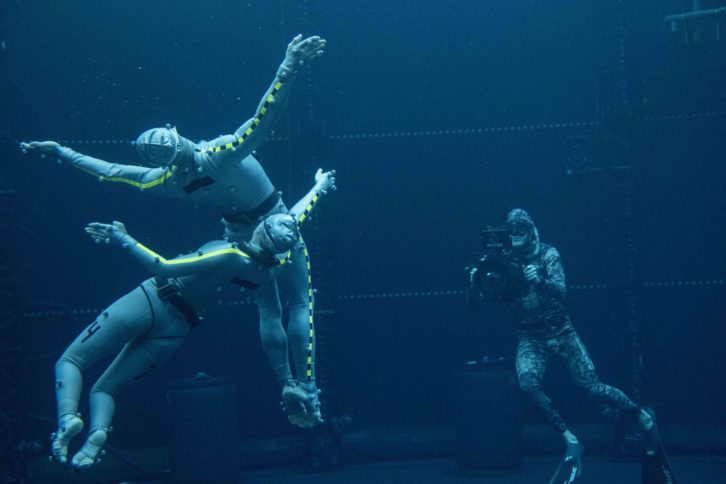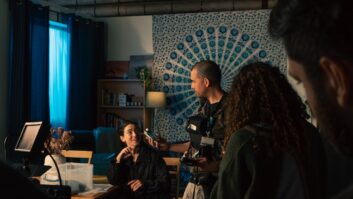At just over three hours long, Avatar: The Way of Water is epic in many different ways. Filming began in 2017, eventually wrapping in November 2018. Four years later, the film arrives in cinemas around the world this weekend.
One of the reasons for such a long time between the end of the production and the film’s release is that it contains a huge amount of visual effects, created by Weta FX in New Zealand.
Director James Cameron revealed earlier this summer that the film is being released in 4K with high dynamic range visuals, which meant its frame rate increased from 24 to 48 frames per second. This led to a huge workload for Weta, with the company averaging around 500 iterations per shot.
The company soon realised it didn’t have the compute capacity to handle the huge amount of data needed to complete its work on the film, and so it turned to the cloud and Amazon Web Services.
“Weta is almost 30 years old and there are so many in-house built tools, and complex multiple pipelines,” Nina Walsh, media and entertainment business development leader, A/NZ at Amazon Web Services (AWS), tells TVBEurope.
“They had started working on Avatar: The Way of Water already but it was still in the early stages at the time we began talking. We knew they had to deliver this enormous film by the end of 2022, so we began working backwards from that in terms of how we could help give them the ability to do that.”
In fact, on AWS Weta has created 3.3 billion thread hours for the film. “From a capacity scaling perspective, they got to over a million virtual CPUs, which is eye-watering, if you think about it,” adds Walsh.
“A lot of the water scenes are truly amazing,” she continues. “The compute capacity required to deliver those shots and make them look realistic is enormously large. Hence why I think looking at other projects that they were working on, Black Panther and others, and what they were using from a compute perspective, the alarm bells started going off pretty early to say we’re going to run out of room.”

Opting to use the cloud, meant that Weta didn’t need to build another data centre, thus helping them to save money, but it also opened up the company geographically. “Weta opened an office in Vancouver earlier this year, and they’ve just announced a studio for Melbourne as well,” explains Walsh.
It also allows the company to employ artists who aren’t based anywhere near one of its on-premise sites. “Looking at where the global artist workforce is, the logistics of shipping a workstation to someone out in the middle of Spain or wherever, is a little bit old school,” Walsh adds. “So they were looking at possible options to innovate around the way that they were actually working and the way that they’re engaging those artists remotely.”
That of course means security is incredibly important – no matter what project the company is working on. Walsh stresses that security is deemed “job zero” at AWS. “Our reputation in this industry is very important, media and entertainment is a global focus for us,” she adds. “We’ve invested a lot in this area, including hiring people like me into the business from the industry to work with our customers.
“Having been in the visual effects industry myself, I’ve been through many a security audit and there just is no room for error. Everything has to be highly controlled. That’s why we work with organisations like MovieLabs and the Trusted Partner Network. We’ve got our own Amazon Studios as well that have their own audit process. We work with our customers to make sure that they are setting up and protecting their side of the infrastructure.”
With any project of this size, challenges arise, both for the creatives and for AWS itself. Walsh admits one of the issues on Avatar: The Way of Water was getting everyone used to change. “I think innately people prefer to keep doing things the way that they’ve done them previously,” she explains. “We had great buy-in on all levels, which was awesome, and that’s how we were able to get to this point. We had C-suite level engagement, medium level, and then we had some of the junior teams like the wranglers, for example, who were very keen to try new things and innovate and experiment”
Walsh adds that where the partnership between Weta and AWS really blossomed was in the engagement across all levels of both businesses. “I also think having our service teams be so approachable and engaged with customers really builds trust with them because they can ask questions directly to the product manager of a certain service.
“With Avatar in particular, Weta obviously used a lot of EC2 Instance types, so they were having regular calls with our specialists in that team to say, we need this amount of graphics, RAM and CPU, which instance types should we be using? It was a very iterative process, testing out what we could do from our side to support their needs. And the same from a storage perspective. We’ve got a number of storage offerings, and they used a number of different ones throughout the process. Some worked really well, some didn’t.”

There were also unique challenges to this project, not least the issue of time zones. “From 2020, when we started working with Weta through till now, we didn’t have that ability to get people down to Wellington,” explains Walsh. “So setting up calls at all hours from our side and from their side to try and get them in front of the right people, I think was something unique to them being so remote. That’s part of their journey, I think, looking at this multi-site future. People have always been happy to move down to Wellington, but now there are other options, they can actually still live in Spain or wherever, and work remotely for Weta.”
The Way of Water isn’t the only Avatar sequel in the pipeline. There are plans for another three films, with live-action filming already underway. From the first Avatar film’s release 13 years ago to the fifth film’s expected premiere in 2027, the technology behind the visual effects has evolved considerably throughout the process. Weta has already undergone a great deal of development internally to meet Cameron’s expectations and while everyone is taking a bit of a breather at the moment to celebrate The Way of Water’s release, discussions are still on-going between Weta and AWS in terms of looking at what they could do better as work builds on the next film. “We’ll be working with our teams to say, these were the challenges we faced in various parts of the pipeline, how can our team support Weta on doing a 2.0 version, if you will, for the next film,” says Walsh.
Working so closely with Weta on the project means there are many learnings AWS can implement for other customers. Top of that list is being considerate of timelines, says Walsh. “The film is always the priority. It’s always about delivering the movie. That can’t be delayed,” she adds.
“Other than the compute capacity and all of that, communication is the most important thing,” she continues. “It’s getting that top-down communication on where the business wants to go, and why they’re looking to engage with us. That’s something that a lot of our customers come up against, there may be a certain decision-maker making that choice, and that’s fine. But then that needs to be communicated on all levels of the business so everybody knows that they’re going in the same direction.”






